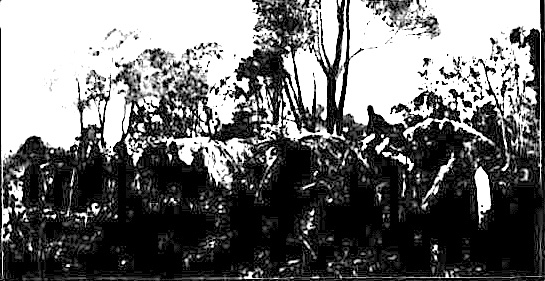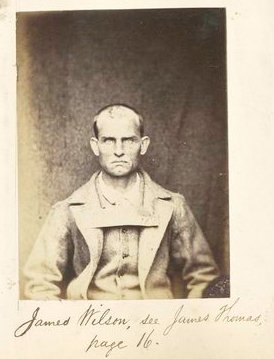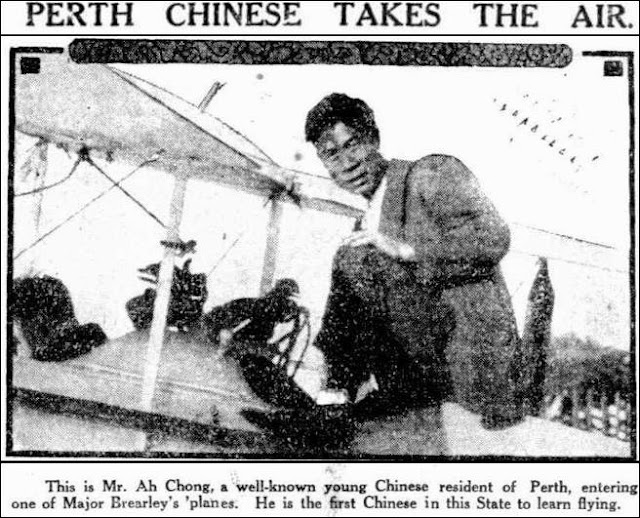Perth is one of the most isolated cities in the world, with the closest city being Adelaide, which is more than 2,200 km away. However, Perth is constantly ranked as being one of the most liveable cities in the world.
When Captain James Stirling founded Perth, Western Australia, in 1829, he named after the town of Perth, Scotland.
The Whadjuk Noongar Aboriginal People
The Whadjuk Noongar (meaning man or people) Aboriginal people have lived on the land around Perth (called Boorloo or boodjar [country]) for more than 35,000 years.
The Dreamtime, called Nyitting (cold time) by the Noongar people, was the time of creation when the Earth and all the living things came into being.
A few days later, Yagan, Midgegooroo and other Noongar warriors attacked the farmhouse, on the land where their clan member had been killed. They found the door locked, and began to break through the mud-brick walls. The servant Erin Entwhistle opened the door in order to engage in discussion, but he was killed by Yagan and Midgegooroo.
The Swan River, a sacred place to the Noongar people, was created by Wagyl, a water-serpent, that created the river and other water sources around Perth. The Wagyl moved across the land, creating rivers and other landforms.
James Stirling was declared lieutenant governor on 18th June. Stirling decided that Fremantle would become an important port and Perth the capital.
On August 12, the official ceremony to mark the foundation of the City of Perth was held on a small hill overlooking the Swan River.
Surveyor-General, John Roe surveyed the sites of Fremantle and Perth and their streets and parklands.
At the end of 1831, Noongar man, Yagan and his father, Midgegooroo, led the first significant Aboriginal resistance against the settlers, after one of Yagan's clan members was killed whilst raiding the potato patch of a farmer.
Stories about the heroic spiritual beings and the time of creation are passed down by the old people (deman) to the children (koorlangka).
Noongar people belong to Totems which are believed to be the descendants of heroic creator beings. These Totems can be an animal, plant or other object.
The Totem that a person belongs to also determine a person's relationship to others, and who one can marry, and rights and responsibilities. Totems are split between Moieties (everything is split in half). According to ethnographer, Daisy Bates, a person must not marry a member of the same skin group, meaning, "a Crow man could only marry a Cockatoo woman and vice versa".
Scholar, Patricia Baines wrote:
"To look at the land through Nyoongah eyes is to perceive personhood in all life forms. Old trees are parents and seedlings are children. Birds and animals, particularly when one of them behaves in an unusual manner or is distinguished in some way, may be a deceased ancestor. The land is seen as a huge body – most often it is recognized as the body of one’s mother. To put a trench through the ground is to scarify the mother’s back or dig into her guts." (1998)
The main camp for the Noongar Aboriginal people was at Kings Park, but as they fished and hunted and gathered food, they moved about a large area.
The Noongar people also came into contact with Dutch, English and French navigators, who visited explored and mapped the west coast of Australia, before the arrival of Captain James Stirling.
Aboriginal people generally appeared to believe that Europeans were the returned spirits of their dead, ancestors (Djanga).
The British: 1820s
Captain James Stirling came to Perth with a small band of settlers to colonise the region for the British in 1829. One month after Stirling's arrival, Captain Fremantle annexed the area for the British crown. Overall, impressions of Perth before Stirling's favourable reports were that the Perth area was a barren and waterless place.
Captain James Stirling came to Perth with a small band of settlers to colonise the region for the British in 1829. One month after Stirling's arrival, Captain Fremantle annexed the area for the British crown. Overall, impressions of Perth before Stirling's favourable reports were that the Perth area was a barren and waterless place.
James Stirling, who had been appointed by the British Government as the first Western Australian governor, had explored the area around the Swan River in March 1827. Stirling favoured the settlement of the western half of Australia, which was still unclaimed until a military outpost was stationed at Albany in 1826.
The tall forests and woodlands around the Swan River suggested to Stirling and his companions during their 1827 explorations that the land around Perth was fertile. But in fact, most of the land was unsuitable for agriculture and farming of livestock.
On 2 May 1829, Captain Fremantle claimed the west coast of Australia for Britain. The Swan River Colony became the first free settlement in Australia when the first free settlers arrived in June 1829.
 |
| James Stirling. 1st Governor of Western Australia. before 1866 |
 |
| "'The Foundation of Perth" by George Pitt Morison |
Within the first 6 months, 25 ships of settlers arrived in the Swan River Colony, many unprepared for the life of hardship to follow.
The establishment of Perth was slow and arduous as the inexperienced settlers tried to clear the dense forests and begin farming the sandy soil. Unsurprisingly, about half the original settlers left the colony and headed back east, and the British newspapers were reporting that the struggling colony was a failure.
1930s-40s
 |
| The Round House, Perth WA. The Round House was the first permanent building built in the Swan River Colony. Built in late 1830 and opened in 1831 |
Yagan
Relations between settlers and Aboriginal people had been amicable in the beginning, as the Aboriginal people welcomed the white settlers as Djanga, the returned spirits of their ancestors. However, as settlers fenced off land, the Noongar hunting and gathering way of life was severely impacted.
The Aboriginal practice of burning the bush to flush out game and encourage the germination of undergrowth, also threatened crops and the houses of the settlers, which added to the conflict.
In June 1832 Yagan and Noongar warriors attacked two labourers sowing a field of wheat, with one labourer dying from the attack.
Yagan was declared an outlaw and a reward of £20 was offered for his capture. 15 August 1833 Yagan was killed by two shepherds.
Clashes
On 24 April 1834 aproximately twenty to thirty Murray men and women, led by an Aboriginal resistance leader named Calyute, besieged a flour mill near Perth, threatened the miller George Shenton, and stole a large quantity of flour. This led to increasing tension and violence between British settlers and Noongar people and the "Battle of Pinjarra". Calyute, however, reputedly survived into old age.
 |
| "These are the people that the early settlers had to war with". Truth (Perth, WA : 1903 - 1931), Sunday 10 March 1929 |
 |
| The Old Court House is the first court building constructed in Perth, Western Australia. Completed 1836 in classical Greek revival style |
Charles Darwin
Charles Darwin, the naturalist, described the Noongar dancers that he saw in March 1836, on the south coast of Western Australia, as "a group of naked figures ... all moving in hideous harmony."
One of the early newspapers of the Western Australian colony was The Inquirer, established by Francis Lochee and William Tanner on 5 August 1840.
One of the first buildings of the Perth settlement, which was located on the corner of St Georges Terrace, and William Street, was known as the King's Head Hotel. The hotel was bought by William Leeder and it became known as Leeder's Hotel. Soon becoming one of the most popular hotels in Perth. ( In 1894 the Leader family sold the hotel and it was demolished)
Convicts
The Perth Boys School was established in 1847.
In 1856 Queen Victoria officially proclaimed Perth a city. However, despite complaints from the free Perth citizenry about "daily Plunderings", convict transportation to Western Australia did not stop until 1868.
1900
The University of WA was established in 1911, and began teaching students two years later. It is the sixth-oldest university in Australia.
To the end of her life she raged and stormed at the usurping of her beloved home ground. ..... Through fences and over them, Balbuk took the straight track to the end. When a house was built in the way, she broke its fence-palings with her digging stick and charged up the steps and through the rooms."
Fremantle Railway Bridge collapsed in July 1926, after the Swan River flooded.
Centenary
1990s
2000s
By the late 1840s, the population of the Perth settlement stood at about 4600 people, but there was a severe shortage of manpower. Suggestions began to be made, especially by influential landowners and merchants, that the lack of able-bodied men could be solved by the transportation of convict labour into the colony. The request for convict labour was submitted to the British government and accepted.
Perth became a penal settlement in 1850. Over the next 16 years, more than 9000 convicts landed in Perth, and their labour transformed Perth with large-scale building and public works. Between 1850 and 1868, 9,721 convicts were transported to Western Australia on 43 convict ships.
The book, The People of Perth: A Social History of Western Australia's Capital City, by C T Stannage, says that during the convict era: "There were times indeed when Perth seemed to be a society under siege, with strengthened doors, fitted locks, restricted personal movement (especially for women and children), and over and above this nervousness and concern, the actual felt experience of personal violence, alienation, and degradation."
Convicts built hospitals, roads, bridges and even the town hall and government house.
1850s-60s
In 1856, at the corner of Hay and Barrack streets, opposite the Town Hall, stood Masons, Devonshire Arms Hotel. Adjoining the hotel, you would find Mason's store (afterwards Monger's), then Thomas' Britnall's boot and shoe shop, then Triggs store, and after that, the old Shamrock Hotel, where the Savoy Hotel now stands. Nearby, was King's carpenters' shop and Isaac Wood's buildings, which were used by Miss Jane Wood as a drapery shop.
By 1868 the total population was 17,000, with convicts outnumbering settlers.
The ship, the Hougoumont, was the last ship to take convicts from the UK to Australia.
The first telegraph line in Western Australia was connected from Perth to Fremantle in 1869. Perth was linked to Albany in 1872.
 |
| A VIEW OF ST. GEORGE'S-TERRACE,PERTH, LOOKING ACROSS THE WILLIAM-STREET INTERSECTION TOWARDS THE BARRACKS, TAKEN AT THE TIME OF THE VISIT OF THE DUKE OF EDINBURGH IN FEBRUARY, 1869. Western Mail |
1870s
Perth still had a village-like atmosphere in 1870 and was described by a Melbourne journalist as: "...a quiet little town of some 3000 inhabitants spread out in straggling allotments down to the water's edge,....".
The first railway in WA was privately built in 1871 and ran between Lockwill and Yoganup south of Perth. The Perth station opened on 1 March 1881 as part of the Eastern Railway from Fremantle to Guildford.
1880s
 |
| Three New AI Class Carriages of the WAGR No.1,2 and 3. Waiting at the platform of Perth Station, WA, on the 1st of March, 1881 |
1890s
In the 1890s, gold was discovered in Coolgardie and Kalgoorlie, bringing an influx of new wealth and hopeful settlers. Perth began to transform, becoming a vibrant commercial city.
Perth’s first electric street light was erected at the corner of Lord and Wellington streets in 1892.
Perth Gas Company began to supply electric light and power in 1893.
Fremantle Harbour officially opened on 4 May 1897.
Following Perth Zoo's opening on 17 October 1898, fifty-three thousand visitors attended in nine months.
The Perth Mint opened in 1899 after the discovery of rich gold deposits in Coolgardie and Kalgoorlie.
Perth Electric Tramways began laying tracks in January 1899 from Hay St, East Perth to Thomas Street, West Perth.
 |
| Old convict prison, Perth, WA, circa 1890 |
_p137_THE_GOVERNMENT_HOUSE_IN_PERTH%2C_WESTERN_AUSTRALIA.jpg) |
| Government House, Perth, WA, 1892 |
 |
| The old mill, South Perth, WA, Western Mail (Perth, WA : 1885 - 1954), Friday 16 December 1898 |
 |
| Donkey rides at the Perth Zoo, WA, Australasian (Melbourne, Vic. : 1864 - 1946), Saturday 27 May 1899 |
 |
| Hay Street, Perth east from William Street, 1894-1899. State Library of WA |
 |
| St Georges Terrace, Perth east form William Street, 1897-1903. State Library of WA |
 |
| The first tramcar seen in the streets of Perth, WA, Western Mail (Perth, WA : 1885 - 1954), Friday 7 July 1899 |
 |
| The original Perth Observatory, WA, was constructed in 1896 and was officially opened in 1900, The National Archives UK |
 |
| Hay Street, Perth, W.A. - circa 1900, Aussie~mobs |
 |
| Hay Street, Perth - looking east - very early 1900s, Aussie~mobs |
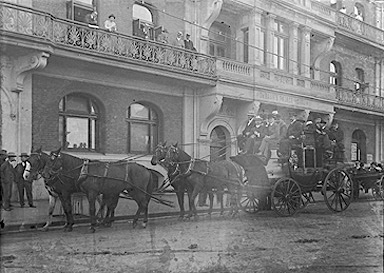 |
| Passengers crowd a stagecoach in front of the Palace Hotel, Perth, c.1905. In 1894 the Leader family sold Leeder's Hotel and it was demolished. The Palace Hotel still survives on the spot of the original Leader Hotel, despite the Commonwealth Bank proposing the demolition of the building in the early 1970s. The local community fought hard to save the building. Even so, when Alan Bond's company bought the building, many of the heritage features were lost and an office block was erected behind the façade. |
 |
| Guinea Pig Castle at Perth Zoo, 1905, Aussie~mobs |
 |
| Causeway across Swan River, Perth, WA - 1907, Aussie~mobs |
Noongar woman Fanny Balbuk Yooreel, who was born in 1842 and died in 1907, was described by anthropologist, Daisy Bates:
"One of her favourite annoyances was to stand at the gates of Government House, reviling all who dwelt within, in that the stone gates guarded by a sentry enclosed her grandmother’s burial ground.
To the end of her life she raged and stormed at the usurping of her beloved home ground. ..... Through fences and over them, Balbuk took the straight track to the end. When a house was built in the way, she broke its fence-palings with her digging stick and charged up the steps and through the rooms."
 |
| Group portrait of Noongar, women, and children, Fanny Balbuk seated on the right in the white dress. State Library of WA 253420PD |
 |
| St. George's Terrace, Perth, Western Australia. From; Glimpses of Australia : Souvenir for the United States Navy, August-September, 1908.Sydney : Government Printer, 1908. Special Collections |
 |
| Shop fronts in Perth, Western Australia - circa 1910, Aussie~mobs |
 |
| W.A. Hunt Club's Meeting, Perth, WA, Mirror (Perth, WA : 1907 - 1910), Friday 7 October 1910 |
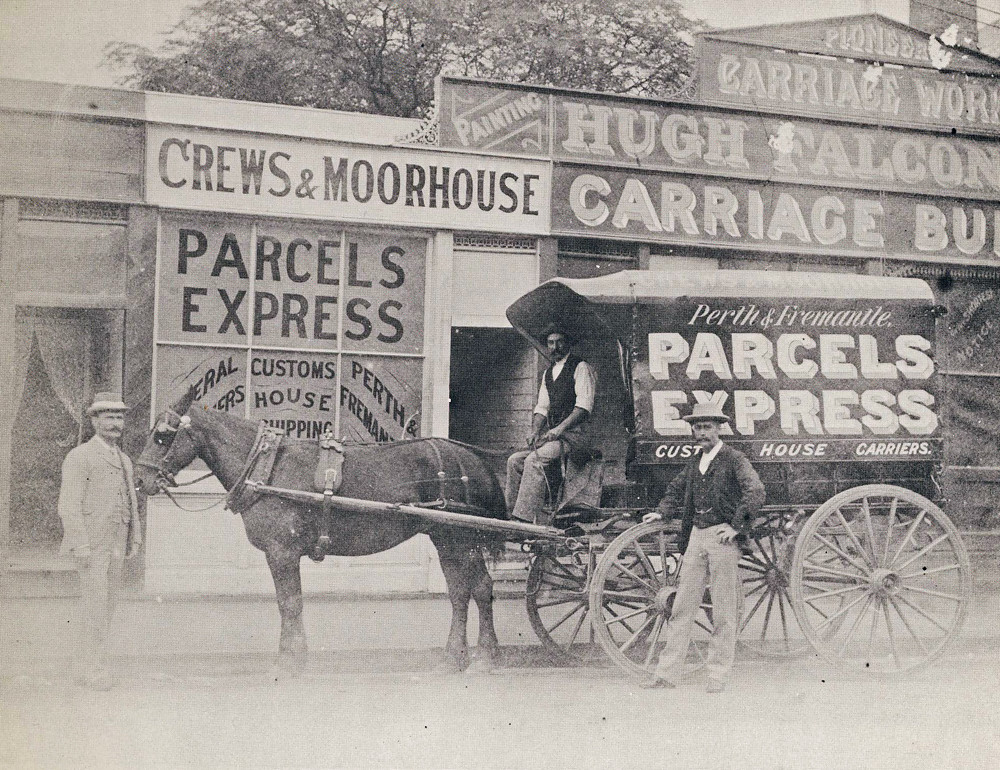 |
| Frederick A. Crews (left), Parcel Express business in Perth, n.d. Aussie Mobs |
 |
| THE PERTH CITY COUNCIL'S 5-TON LEYLANDT MOTOR LORRY. Western Mail (Perth, WA : 1885 - 1954), Friday 3 April 1914 |
WWI
 |
| The Esplanade in Perth, WA - WW1 era, Aussie~mobs |
 |
| March through Perth, Western Australia by Naval Brigade - April 1917, Aussie~mobs |
 |
| Anzac Day celebrations in. Perth, WA, Western Mail (Perth, WA : 1885 - 1954), Friday 4 May 1917 |
1920s
 |
| Wills and Bateman shop in Murray Street in Perth, WA, circa 1920s |
 |
| St George's Terrace, the northern side east from William Street. State Library of WA |
 |
| Druids procession moving north along William Street, passing Hay Street, Perth, WA, circa 1924 |
 |
| Patients at Perth Children's Hospital, WA, Western Mail (Perth, WA : 1885 - 1954), Thursday 21 July 1927 |
1929, Perth commemorates 100 years of British settlement.
1930s
1940s and WWII
1960s
The 1962 British Empire and Commonwealth Games were held in Perth, from 22 November to 1 December 1962.
1980s
 |
| Perth celebrates Cenetenary, WA. His Excellency Sir William Campion declaring Perth a Lord Mayoralty. Australasian (Melbourne, Vic. : 1864 - 1946), Saturday 24 August 1929 |
 |
| Aboriginal people at Perth Centenary, WA, West Australian (Perth, WA : 1879 - 1954), Thursday 3 October 1929 |
1930s
A phone line between Melbourne and Sydney was installed in 1907. And extended to include Adelaide in 1914, Brisbane in 1923, Perth in 1930 and Hobart in 1935.
 |
| Barrick street, Perth, Western Australia - 1930. A set of Australian stereoviews by Sunbeam Tours Ltd., London. 1930s, Aussie~mobs |
 |
| A VIEW OF ST. GEORGE'S-TERRACE,PERTH, WA, Western Mail (Perth, WA : 1885 - 1954), Thursday 3 December 1931 |
 |
| Methodist Inland Mission, new ambulance, Perth, WA, 1930s, Aussie~mobs |
 |
| Wellington Street, Perth, Western Australia -1936, Aussie~mobs |
Samuel Speed, the last living Australian convict, died in 1938, remembered that: "Among those unfortunates transported … were men of every walk of life; doctors, lawyers, shirt-soiled gentlemen, and social outcasts tipped together in the hothouse of humanity that was the Swan River Colony."
1940s and WWII
 |
| 10th Light Horse in Perth, WA, West Australian (Perth, WA : 1879 - 1954), Saturday 11 March 1939 |
 |
| The RAAF in Perth, WA, Western Mail (Perth, WA : 1885 - 1954), Thursday 27 November 1941 |
 |
| West Perth Football Club, WA. Western Mail (Perth, WA : 1885 - 1954), Thursday 22 May 1941 |
 |
| WAAAF March through Perth, WA, Western Mail (Perth, WA : 1885 - 1954), Thursday 3 September 1942 |
 |
| Sunday Times (Perth, WA : 1902 - 1954), Sunday 17 September 1944 |
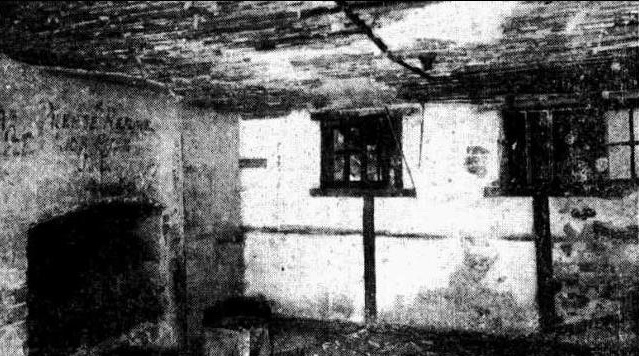 |
Underground dungeon with barred windows unearthed in Barrack-street, Perth, WA. Sunday Times (Perth, WA : 1902 - 1954), Sunday 10 March 1946 |
1950s
The Aboriginal way of life was severely impacted by European settlement and land use. From the earliest years of the colony, there were several missions in Perth, Fremantle and the Upper Swan. However, some Aboriginal people were living as Fringe Dwellers in shantytowns. The complexities of state intervention into Aboriginal people’s lives continues to resonate.
 |
| Corner of Hay and William Sts. The old "Palladium", n.d. State Library of WA |
 |
| Perth tram 38 on the Horseshoe Bridge, WA, 1950 |
 |
| PICTURESQUE PERTH, WA. Brisbane Telegraph (Qld. : 1948 - 1954), Wednesday 22 October 1952 |
 |
| Perth, WA, looking across the Perth train station c. 1955 |
The last tram to operate in Perth, 19 July 1958.
 |
| The Perth Playhouse, WA, was constructed in 1933 and designed by the architect Alexander Cattanach Jr. It is notable for its distinctive Art Deco style. c1960s, phantom of the flicks |
1970s
 |
| Hotel Parmelia in Perth, W.A. - 1970s, Aussie~mobs |
1980s
 |
| Perth, WA, 1980, pszz |
 |
| Wellington St. Forrest Place, Perth WA, 1980, pszz |
 |
| Hay Street, Perth, 1980, pszz |
 |
| Perth 1990 from Kings Park, Perth, Western Australia, Daniel Evans |
 |
| Perth 1990, from Kings Park, Perth, Western Australia, Daniel Evans |
2000s
 |
| The Old Court House, Perth WA, is the first court building constructed in Perth, Western Australia, is one of two remaining examples of the work of Henry Reveley, the colonial civil engineer |
 |
| The Chanel building, named Kelrod House, was once The Truth newspaper office, 39 King Street, Perth, WA |
 |
| Chung Wah Hall, 128 James Street, Northbridge, Perth, WA, circa 1910 |
Lieutenant-Governor, Sir Edward Stone, laid the foundation stone for Chung Wah Association Hall, in 1910. The Chung Wah Association was established in 1909, for social, educational and political purposes.
 |
| Yagan statue. Heirisson Island, Perth, Western Australia. The statue was sculpted in 1984 by Robert Hitchcock. Yagan (1795 –1833) was a Noongar warrior and Aboriginal resistance leader, who fought against British settlement around Perth (Mooro or Goomap). Yagan killed a number of British settlers by spearing, which led to him being pursued as an outlaw by the British authorities. After Yagan was killed, his head was cut off and sent to Liverpool, England, to be studied and displayed. In 1964, Yagan's head was buried at Everton cemetery and then, returned to Australia in 1997. |
 |
| The Carlton Hotel - 248 Hay Street, Perth. Built in 1928 |
 |
| Parliament House, Perth, Western Australia, building commenced in 1902 |
 |
| Perth Modern School opened 1911, WA |
 |
| Winthrop Hall at sunset, University of Western Australia, Crawley, circa 1932 |
 |
| The Atlas Building, 8-10 The Esplanade, Perth WA, Museum of Perth, finished 1931 |
 |
| Heritage listed Kiosk built in 1928 cost $11 million to dismantle and relocate to Perth's Elizabeth Quay, WA |
 |
| Heritage listed Salvation Army, circa 1899 Congress Hall building, 69 Murray Street, Perth, WA |
 |
| The Old Mill in South Perth, WA, circa 1835 |
 |
| Old Courthouse, Stirling Gardens, Perth, WA, opened 1837 |
 |
| Tranby House (also known as Peninsula Farm), circa 1839, Perth, WA |
 |
| The Perth Boys School was established in 1847, WA |
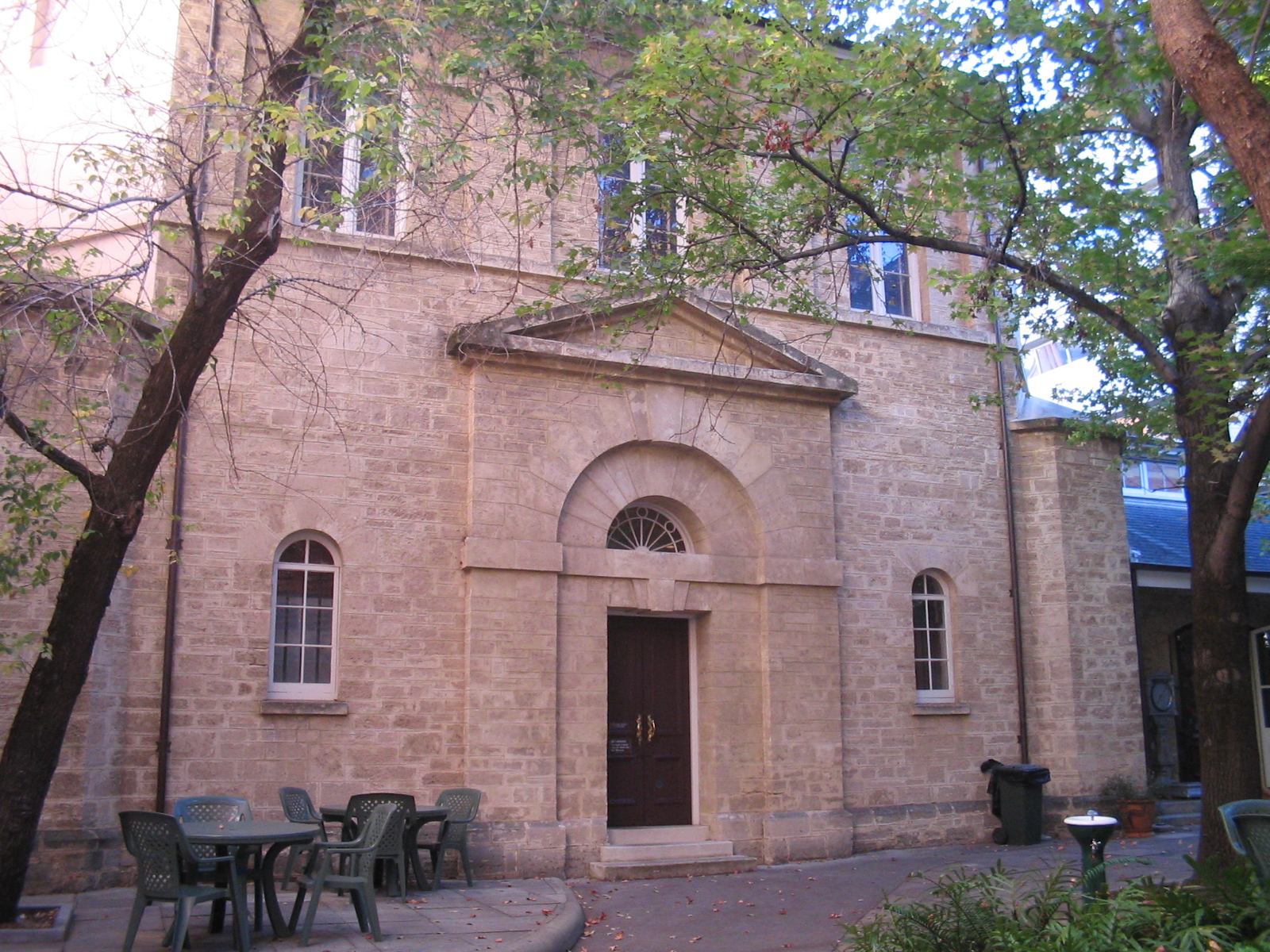 |
| The Perth Gaol was built between 1854 and 1856, WA |
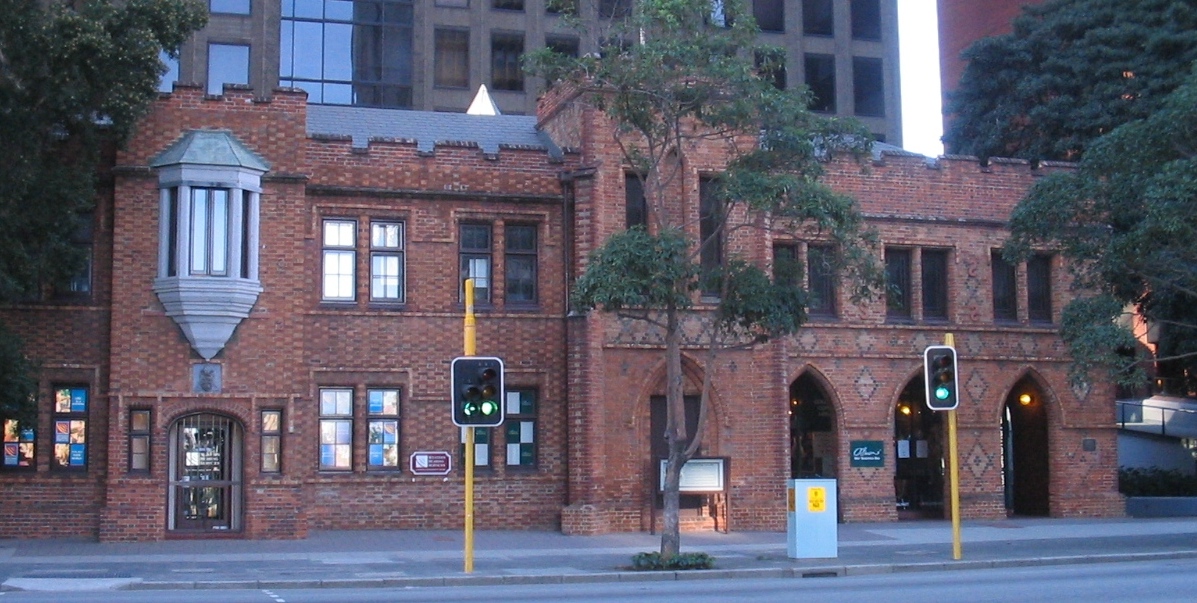 |
| The Cloisters, a two-storey brick Victorian building at 200 St. Georges Terrace, Perth WA,was built in 1858 |
 |
| Built in 1859 as a residence and office for the first Dean of Perth, WA |
 |
| St Georges Terrace, the Barracks Arch was built in 1863 to house a special force of soldiers, Perth WA |
| Government House, Perth, WA, was built between 1859 and 1864, in the Jacobean Revival style |
 |
| Perth Town Hall, WA, the only town hall built by convicts in Australia, opened 1870 |
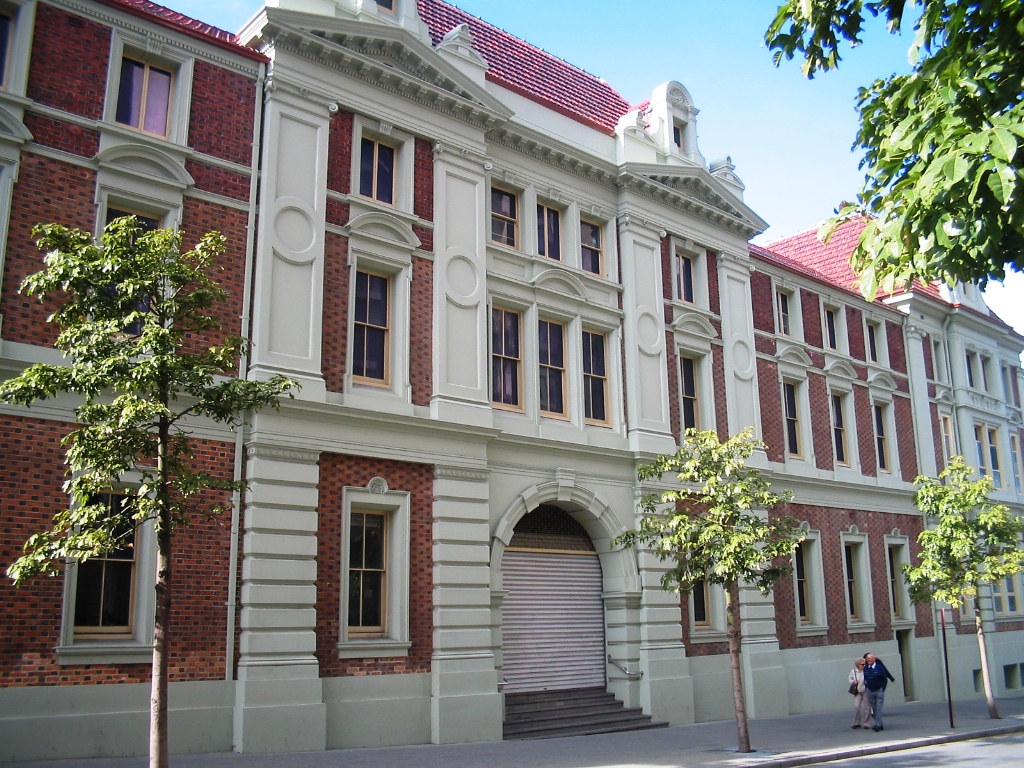 |
| Central Government Offices, Barrack St, Perth, WA, constructed from 1874 to 1904 |
 |
| 237 Beaufort Street, Perth, WA, built, built in Federation Fliligree style, about 1897 |
 |
| His Majesty's Theatre is an Edwardian Baroque theatre in Perth, Western Australia. Constructed from 1902 to 190 |
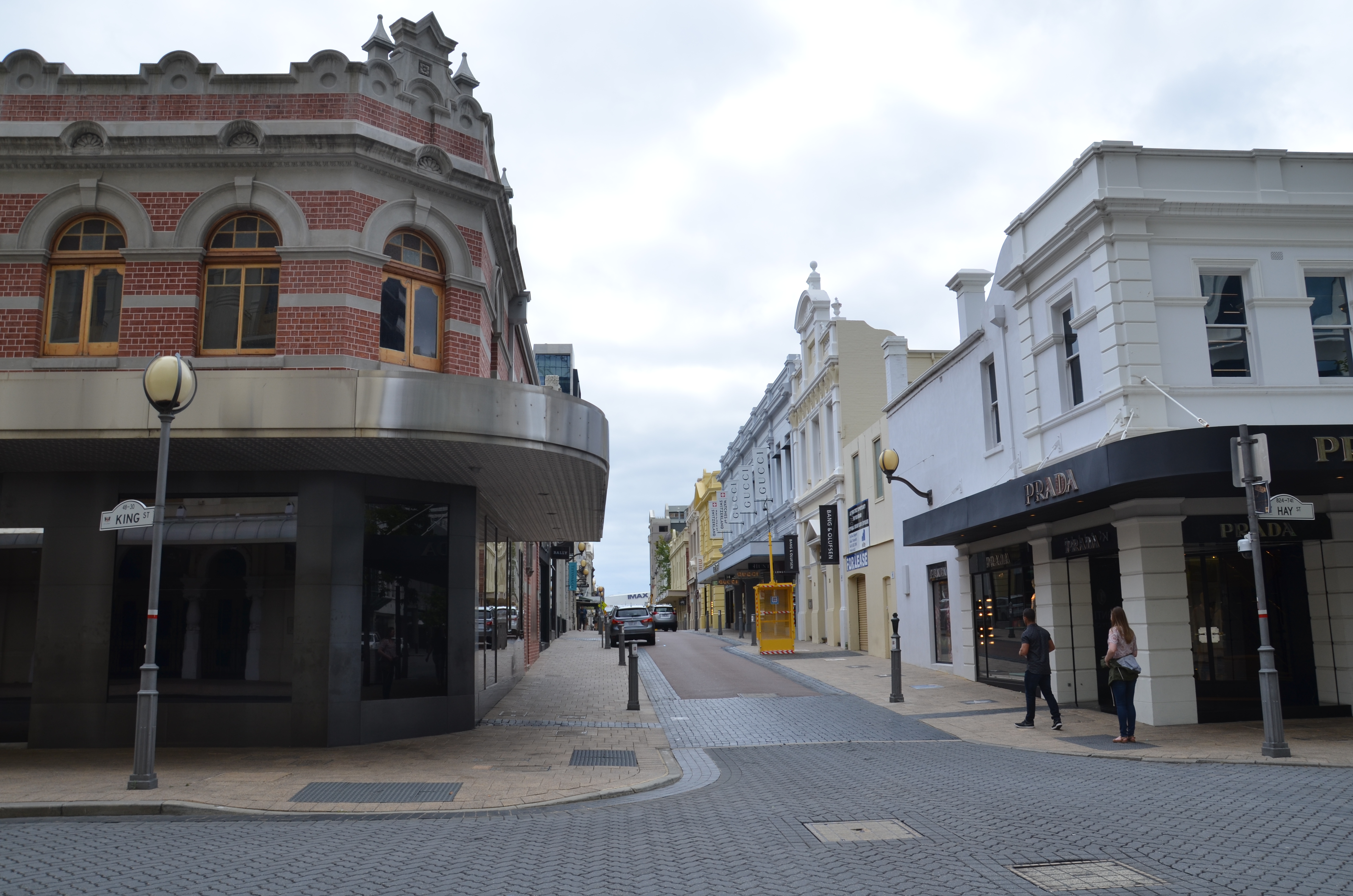 |
| King Street from Hay Street, Perth, WA |
| View of the Northern side (Roe Street) of the Horseshoe Bridge, William Street, Perth, Western Australia |
 |
| Residence of Bishop Mathew Blagden Hale, built 1859, Perth, WA |
 |
| The Weld Club, 4 Barrack Street, Perth, WA, 1892 |
 |
| Perth Mint310 Hay Street, Perth, WA, Foundation stone was laid in 1896 and competed in 1899 |
| The Old Perth Fire Station, Perth, WA, circa 1900 |
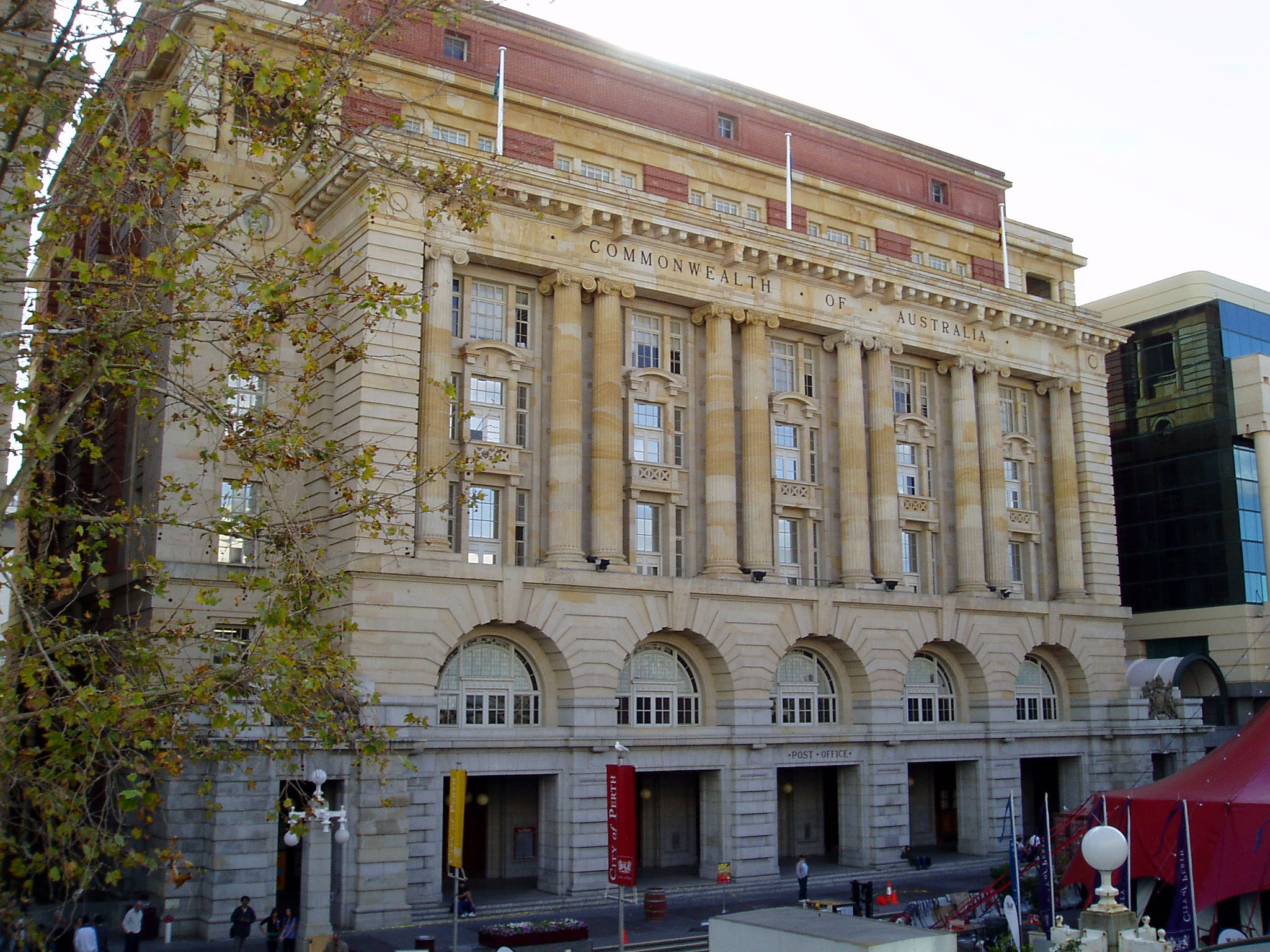 |
| General Post Office, Perth, WA, 1923 |
 |
| Parliament House, Perth, WA, is located on Harvest Terrace, finished 1904 |
 |
| Greek Orthodox Church of Saints Constantine and Helen, Northbridge, WA |
 |
| The Palace Hotel in Perth, WA, today |

